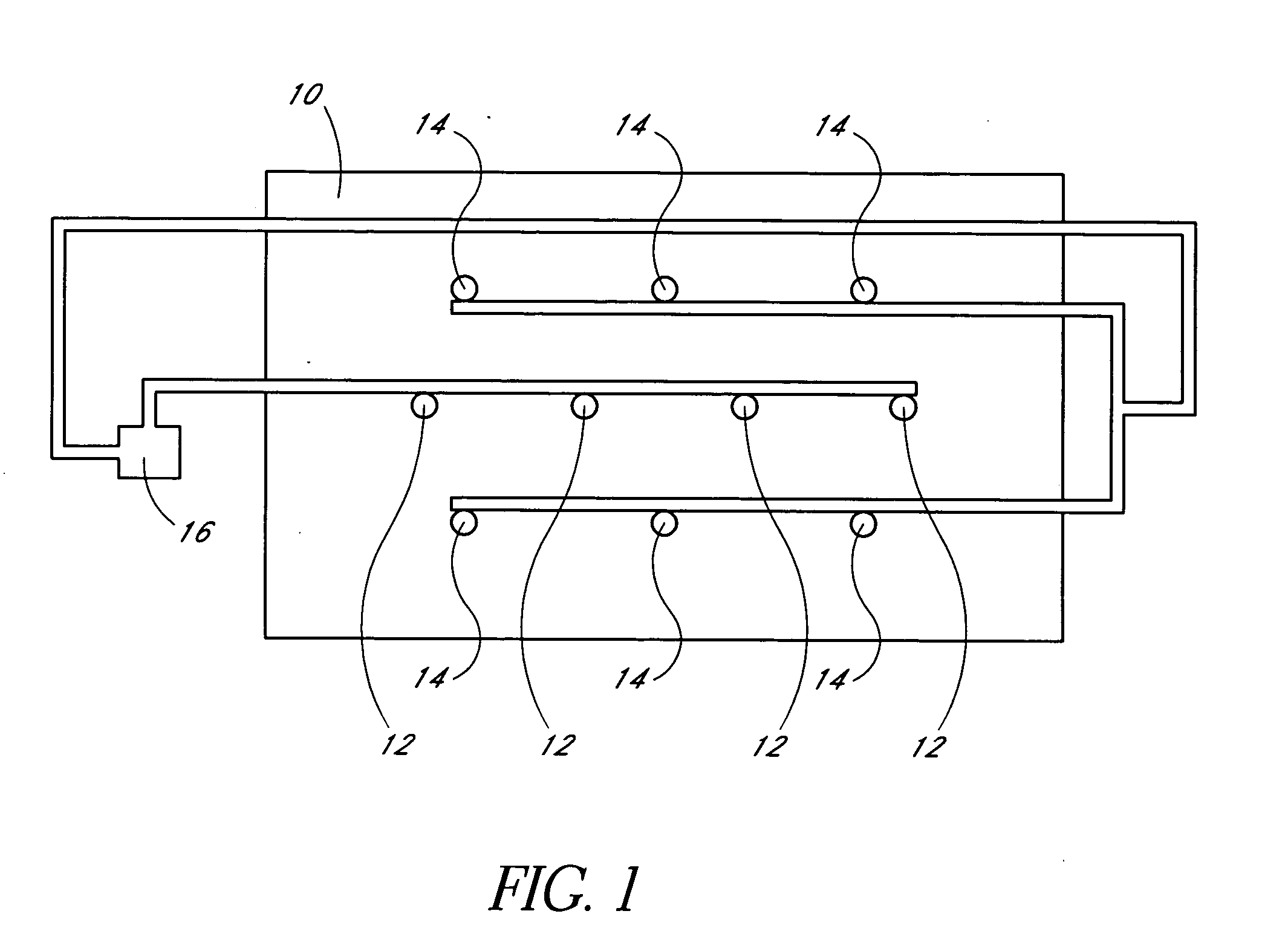Method and apparatus for treating refuse with steam
a technology of steam treatment and refuse, which is applied in the direction of lighting and heating equipment, manufacturing tools, furniture, etc., can solve the problems of organic refuse that remains dormant for decades, groundwater contamination, and unfavorable decomposition of organic refuse, so as to increase the overall humidity of the landfill, increase the btu value, and improve the effect of btu
- Summary
- Abstract
- Description
- Claims
- Application Information
AI Technical Summary
Benefits of technology
Problems solved by technology
Method used
Image
Examples
Embodiment Construction
[0039] In an embodiment of the present methods and apparatus, steam is injected into a landfill 10. The steam promotes the anaerobic biodegradation of the organic refuse in the landfill 10, which in turn increases methane gas generation and increases the rate of settlement of the landfill 10.
[0040]FIG. 1 schematically illustrates an apparatus for performing an embodiment of the present method. Several lines of steam injection wells 12 and several lines of gas extraction collectors 14 are positioned within a landfill 10. The arrangement depicted in FIG. 1 is merely exemplary. The ideal location for the injection wells 12 and gas collectors 14 is preferably determined prior to installing the steam injection apparatus, and may differ significantly from the arrangement of FIG. 1.
[0041] One preferred method of determining the ideal location for the steam injection wells 12 and gas collectors 14 is to perform a piezo-penetrometer test (PPT) profile on the landfill 10. The PPT profile is...
PUM
 Login to View More
Login to View More Abstract
Description
Claims
Application Information
 Login to View More
Login to View More - R&D
- Intellectual Property
- Life Sciences
- Materials
- Tech Scout
- Unparalleled Data Quality
- Higher Quality Content
- 60% Fewer Hallucinations
Browse by: Latest US Patents, China's latest patents, Technical Efficacy Thesaurus, Application Domain, Technology Topic, Popular Technical Reports.
© 2025 PatSnap. All rights reserved.Legal|Privacy policy|Modern Slavery Act Transparency Statement|Sitemap|About US| Contact US: help@patsnap.com



